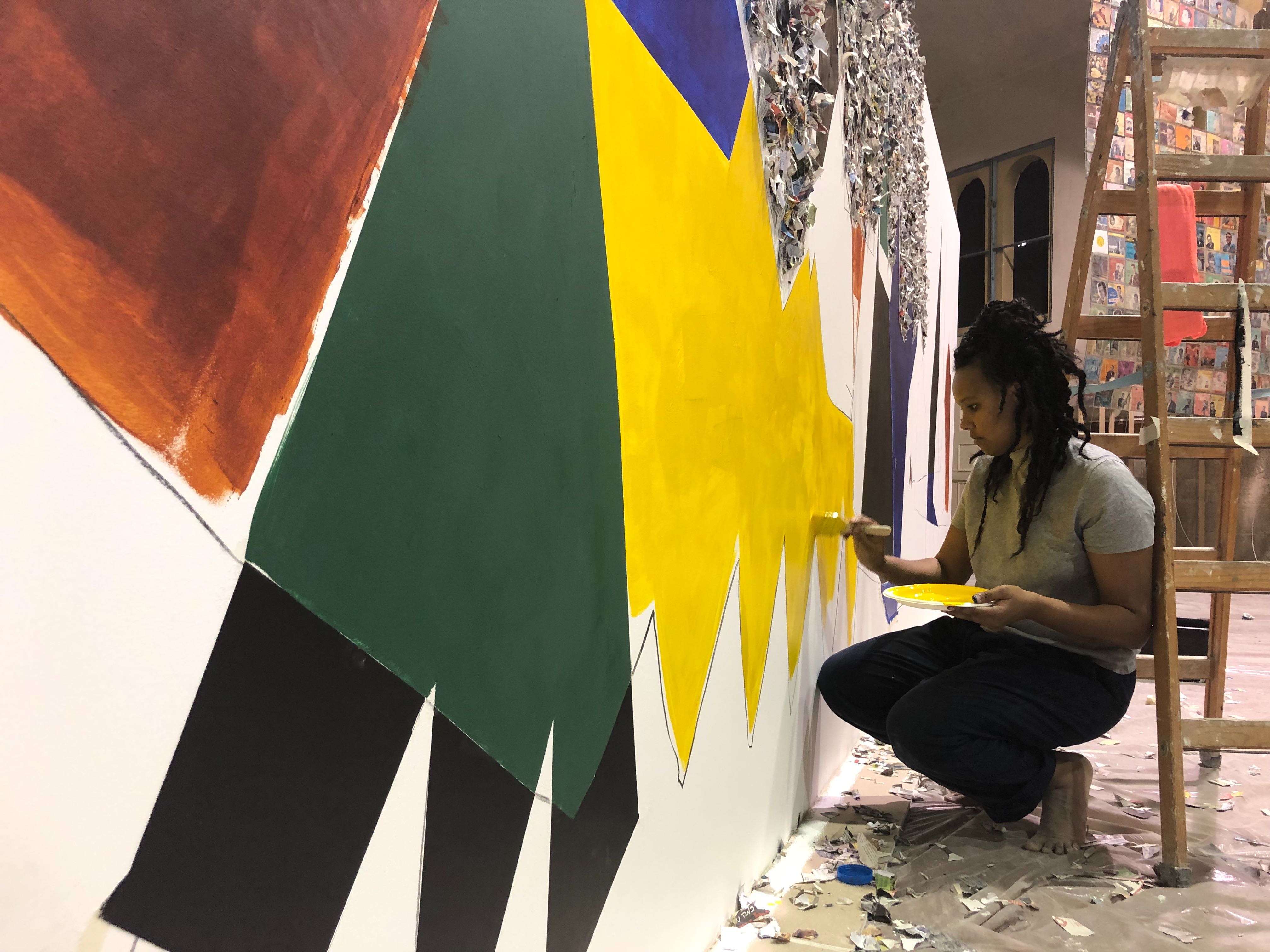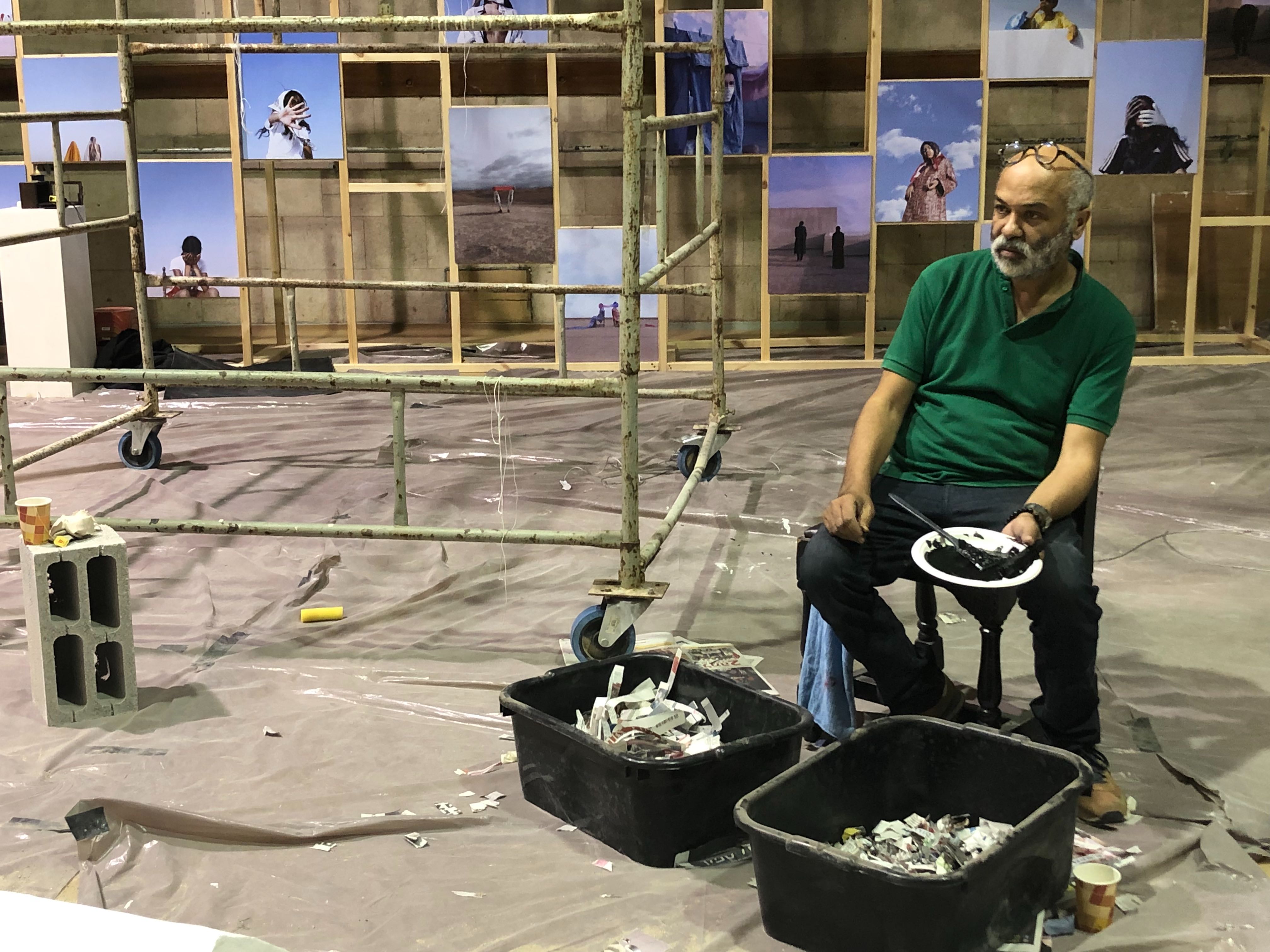The fourth Jerusalem Biennale for Contemporary Jewish Art, which explores the intersection between contemporary art and the Jewish world of content, kicked off this week with the theme “For Heaven’s Sake,” exploring motivation for action and artistic creation, as well as the Jewish tradition of dispute.
This year’s Biennale showcases the work of 200 professional Israeli and international artists in 30 exhibitions and 14 venues around the city. (It began on Oct. 10 and lasts through Nov. 28.) Both Jewish and non-Jewish artists from the United States, United Kingdom, Europe, Morocco, India, Argentina and Israel have created works that address themes in Jewish discourse, both in the Diaspora and Israel.
The name of the theme refers to the well-known verse from the Mishnah, Pirkei Avot (“Ethics of the Fathers”): “Any dispute which is for the sake of Heaven will ultimately endure, and one which is not for the sake of Heaven will not ultimately endure.”
According to Biennale materials, “The dynamic, sometimes challenging, process of seeking truth, even in mundane matters, is connected at its core to this tradition of dispute. It is a path [that] empowers mankind’s quest to repair the world, and along the way, perhaps even find transcendence.”
Curated by Sagi Refael and assembled by the Jewish Artists Initiative (JAI) of Southern California, the “Table of Contents/Table of Contacts” exhibition in Hechal Shlomo explores American-Israeli relations, their alliance and dialogue amid “divisive and politically challenging times, for both the United States and Israel.”

The exhibition’s video installation and original artist books show 27 Jewish artists and art professionals living in Los Angeles from multiple generations of Jewish experiences and points of view, answering questions about their connection to Israel. The notion of Israel as the homeland of the Jewish people—albeit one that may not receive automatic moral and financial support for all its policies—is mentioned frequently.
“Disagreements and misunderstandings do not occur solely with strangers and enemies; they can also occur within the family,” notes the exhibition.
According to Refael, while the American-Israeli alliance is perceived to be everlasting and unbreakable, Table of Contents/Table of Contacts seeks to challenge Jerusalem visitors to the exhibition by presenting “the entire spectrum of opinions about what support of Israel means today.”
“We wanted to open a discussion among Israelis and American Jews about their perceptions,” he tells JNS.
The exhibition is also being presented at the USC Hillel Art Gallery in Los Angeles until Oct. 20.
‘Rethink what we use and how we live’
Another exhibition at the Hechal Shlomo venue, curated by Andi Arnovitz, is titled: “Living Under Water: An Artistic Conversation About Climate Change.”
“For the sake of Heaven and humanity, we must acknowledge and try to repair the destructive course of our planet,” Arnovitz said at a preview of the exhibit.
“In 2018, Beit Venezia: A Home for Jewish Culture in Venice, decided to initiate an inquiry and exploration of climate change from a uniquely Jewish lens and invited five artists to create immediate responses to the global climate crisis,” she explained. “Venezia is a city whose very existence is threatened by rising sea levels, tourists and time.”
The artists explored Venezia—once home to a rich Jewish culture, but today faced with a dwindling Jewish population—interviewing rabbis, scholars and activists there, and then creating a suite of 10 etchings in which each artist left their mark, which was then altered by the next artist “as a metaphor for civilization in which each person adds their impact.”

Jews, noted Arnovitz, have a compelling antidote to climate change.
“If everybody observed Shabbat by just being and not doing—it doesn’t matter on which day—we could reverse climate change,” she said. “There is no issue more important ‘for the sake of heaven’ than this,” she claimed. “We have a small window to adapt and change the way we live and our carbon footprint. We need to rethink what we use and how we live.”
Other Biennale venues include Hebrew Union College, Kol HaOt in Hutzot Hayotzer, the Menachem Begin Heritage Center, Mishkanot Sha’ananim, the First Station and the YMCA. The diverse sites, director of content Dr. Ido Noy tells JNS, can be construed as representing a type of dispute as identity “touches on a nerve in Jerusalem.”
With secular and religious venues, for example, Noy maintains that the theme of dispute is set in a “real Jerusalem context.”
This year’s Biennale, unlike prior ones, features artists of the three major religions in Jerusalem. According to Biennale founder and director Rami Ozeri, a goal is to bring interfaith discussion to the Jewish world of content to “create connections and bring people together.”
“That’s what art does,” he tells JNS. “Art has a healing power in Jerusalem, and we want to use it in conflict [resolution], to accumulate and increase the amount of peace in the world.”


























